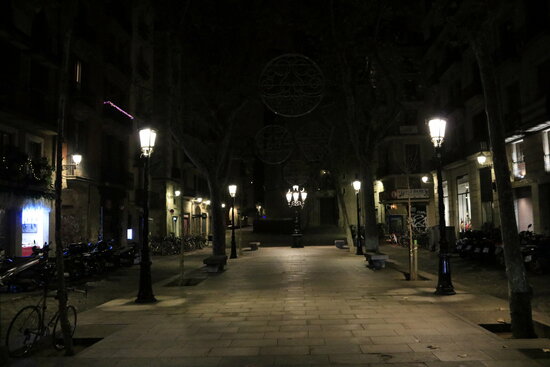Catalonia: a tale of three curfews in 2021
Residents of over 120 municipalities must be home from 1 am to 6 am

For the third time this year, millions of Catalonia’s residents are once again not allowed to leave their homes at night as the Omicron-fueled sixth wave of the pandemic has led to over 10,000 new daily cases for four days in a row.
This third curfew, in place from 1 am to 6 am in over 120 cities and towns with more than 10,000 inhabitants and a 7-day incidence rate of 250 or more, came into effect in the early hours of Friday morning after it was greenlighted by Catalonia’s High Court on Thursday — a requirement for measures that limit Constitutional rights.
First curfew: October 2020-May 2021
The first curfew actually began late last year, on October 25, 2020, before finally being lifted on May 9, 2021. In October 2020, Spain declared a second country-wide state of alarm — the first being when the pandemic first hit and during the strict lockdown months - in which regional governments, unlike the first time around, were allowed to manage restrictions in a decentralized manner.
In Catalonia, this took the form of a 10 pm to 6 am curfew, with stores closing by 9 pm. When it came to an end 195 days later, thousands upon thousands of young people took to the streets to celebrate and drink in public, with police trying to break up rowdy gatherings.
Second curfew: July 2021-August 2021
Their excitement, however, was short-lived. Cases began to rise once again over the summer months when most of Catalonia’s younger residents were not yet vaccinated, and the Delta variant made transmissions surge. Nightclubs reopened but were forced to close only weeks later.
And on July 16, the High Court approved the measure put forth by the Catalan government, this time instating a 1 am to 6 am curfew in Barcelona and 160 other municipalities with more than 5,000 inhabitants and a 7-day incidence rate of 400 cases or more. The cities and towns affected by the restriction changed weekly as transmission numbers fluctuated before coming to an end entirely on August 24 after authorities unsuccessfully attempted to lower the incidence rate requirement beyond 250 to continue including Barcelona.
Covid-19 in Catalonia
As of December 23, 2021, official figures, released daily on this website, state there have been 1,174,484 confirmed Covid-19 cases (PCR tests and others including antibody tests).
The vaccine rollout began in Catalonia on December 27, 2020. As of December 23, 2021, 6,250,177 residents have been given the first dose of the vaccine, 78.9% of the total population. Out of those, 5,423,547 have also been administered a second dose (68.5% of the total population). 6,051,828 residents are considered to be fully immunized (76.1%).
Under 65s who have already had the virus are only required to have the first dose, and others have received a single-dose jab. Therefore, the % of two doses administered and % fully immunized do not match.
Booster shots are being given to people between 50 and 59, for those between 60 and 69, those 70 and over, immunocompromised people, care home residents, and anyone who received the Janssen vaccine. On December 16, authorities also approved them for residents in their 50s and those who had AstraZeneca at least three months ago, regardless of their age. People in their forties will also be able to book their appointments shortly.
As of December 23, 2021, Catalonia has administered 1,686,796 third doses (21.5%).